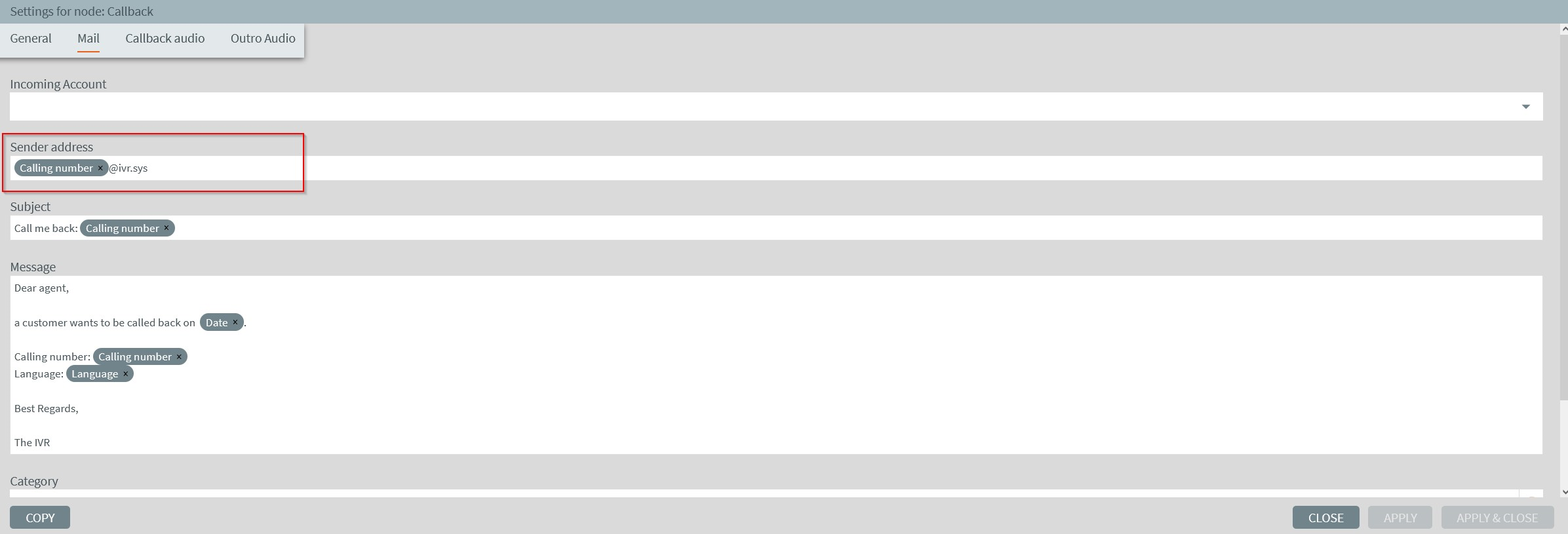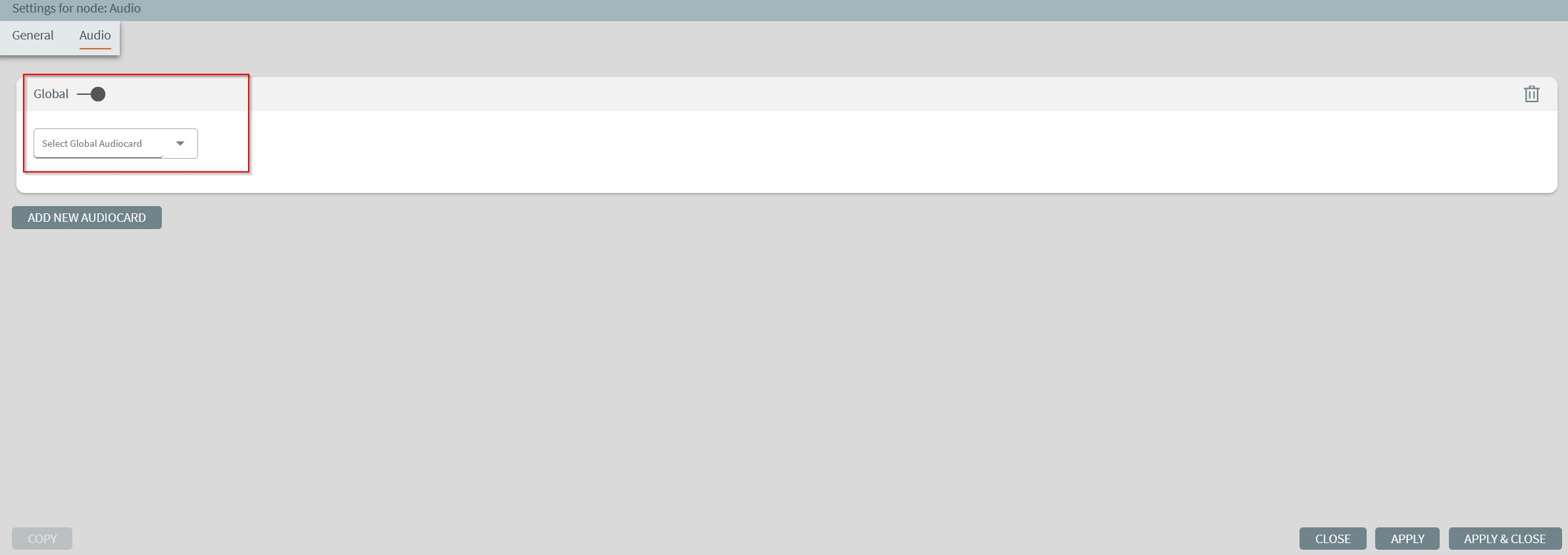Inhalt/Content
Version 8.2
Barge-in and timeout for recording opt-in added
As part of the automated call recording, the “Barge-In” function can now be activated in the “Queue” component for the announcement with which the opt-in for call recording is obtained from the caller. This function is deactivated by default.
The duration for which the system “waits” for the caller’s opt-in can now also be configured here.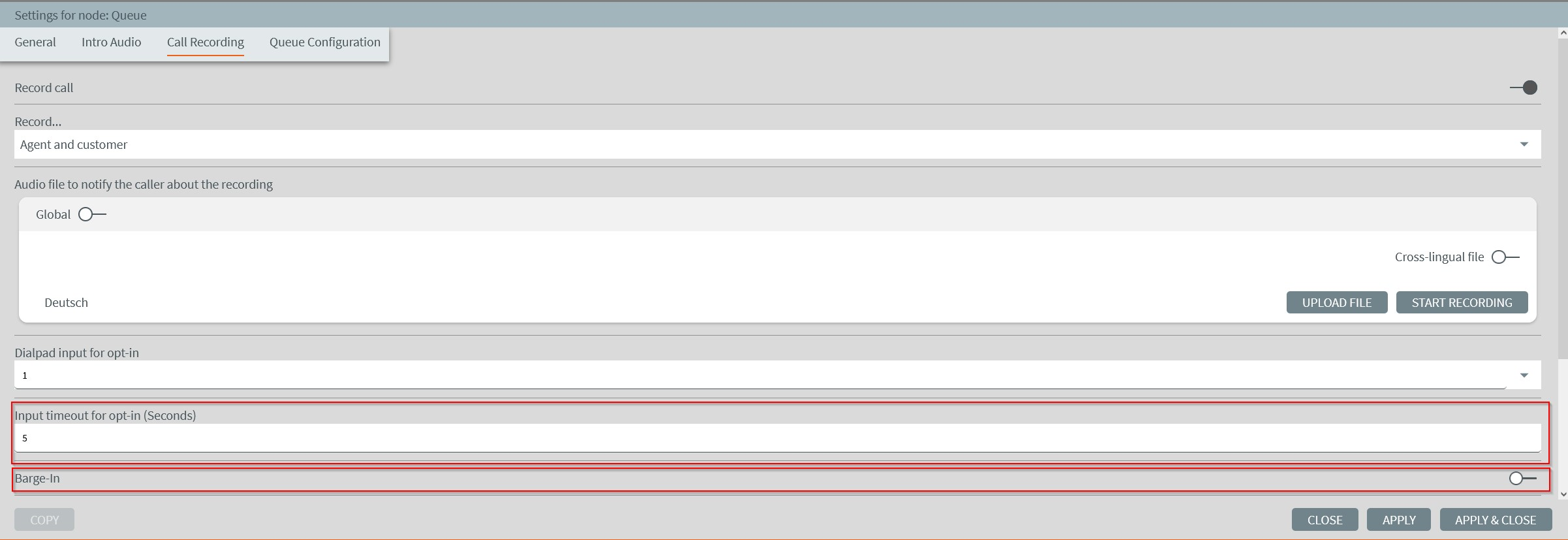
Configure ringback tone sound when call is signaled to agent
In the settings for the “Queue” component, the caller can now be configured to hear a ringback tone when the call is signaled to a service employee at the destination line.
This can be useful, for example, to prepare the caller acoustically after a waiting time that it will probably be their “turn” shortly and that they will be connected to a service employee.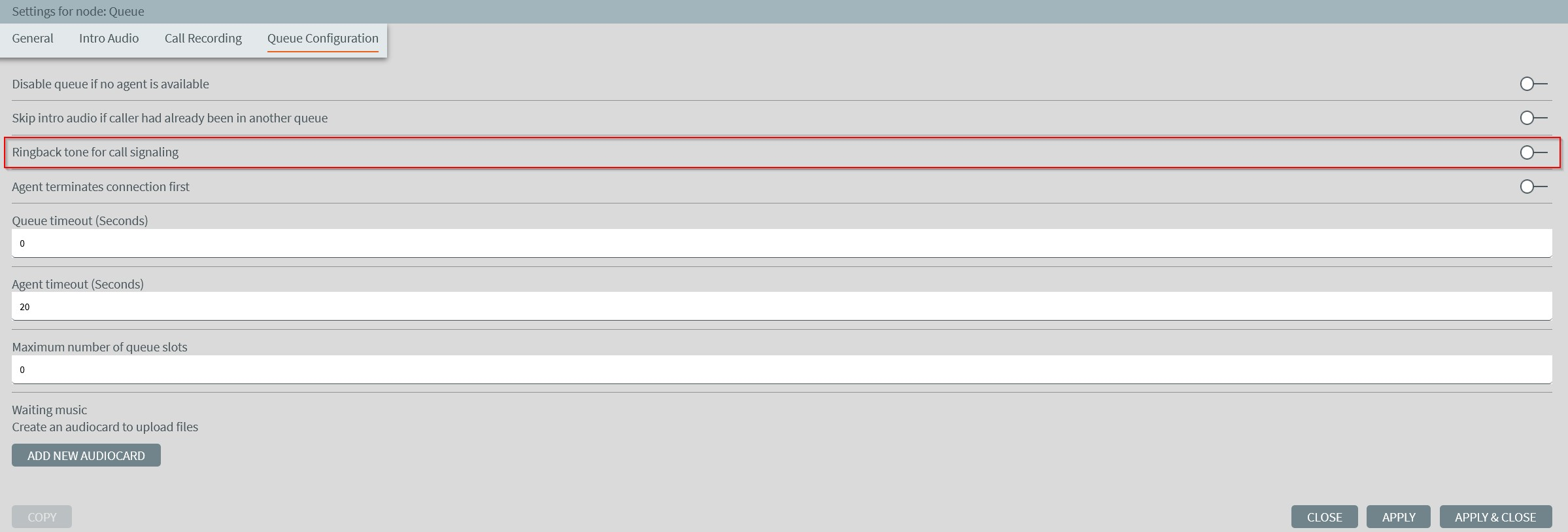
Setting “similarity values” for speech recognition in the menu component
So-called similarity values can now also be set and taken into account as part of speech recognition.
A similarity value from 0 to 5 can be assigned to each keyword, which indicates the sensitivity level for the match with this word. A value of “0” means a minimum match, while a value of “5” assumes an exact match between the stored keyword and the recognized keyword.
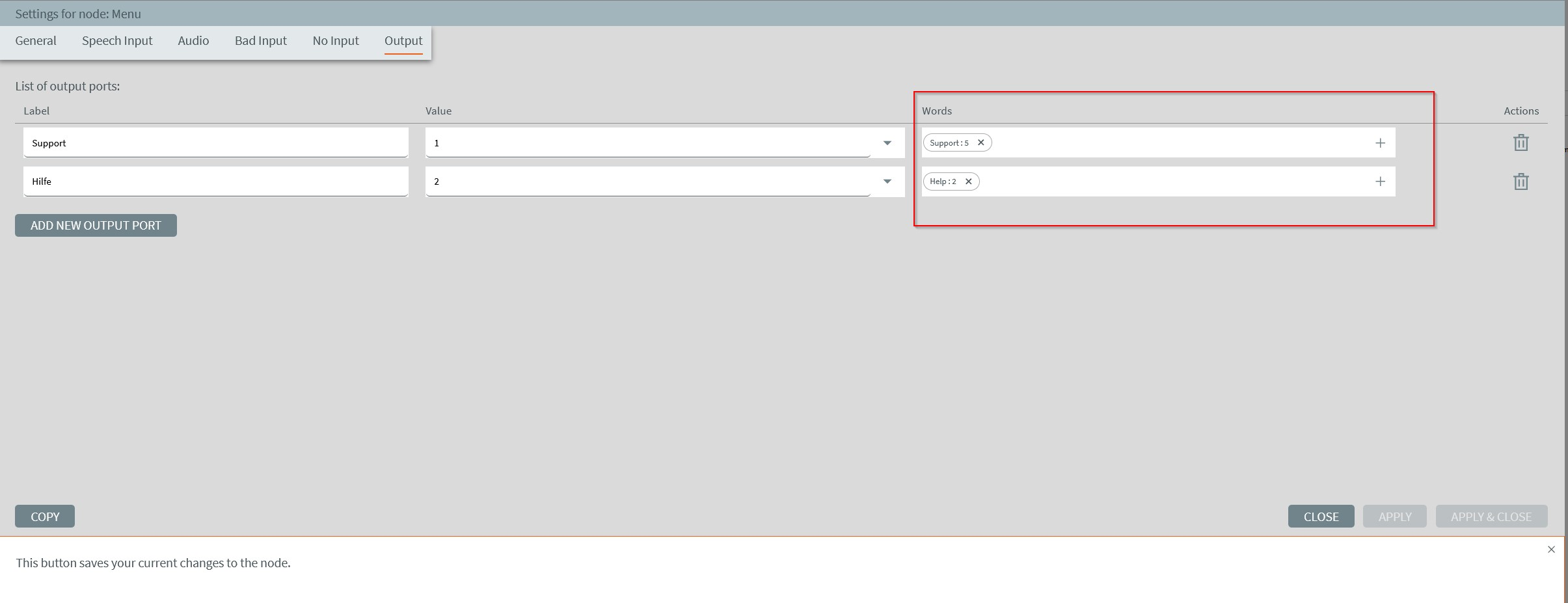
Sender address of callback and voicemessage tickets is now configurable
Callback tickets and voice messages have always been received under the same sender address (ivr@ivr.sys). In novomind iAGENT, it therefore looks as if all tickets come from one and the same “customer”.
For this reason, sender identification has now been made configurable by selecting variables.
The default setting is: <caller number>@ivr.sys (see screenshot).
For this purpose, the two components “Callback” and “Voice message” in the Call Flow Designer under the “Mail” tab have been expanded to include a configuration for the “sender address”.
Global Audiocard
In addition to storing audio files in the respective component, it is now possible to configure global audio cards in the call flow. The audio files can then be referenced for each component if required.
The global audiocards can be configured in the Call Flow settings.
There is now a new button in the Call Flow components that can be used to add a previously configured global audio card to the component and use it there.
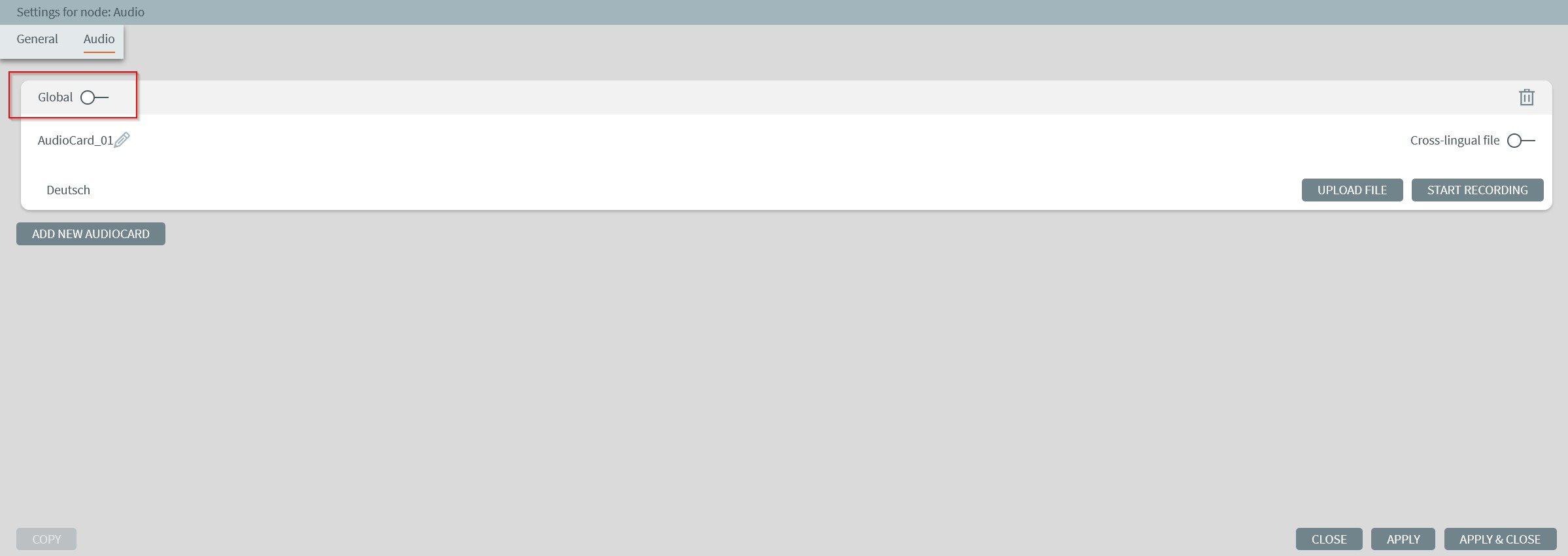
Option to specify the recording format in Voice Message component
A drop-down menu has been added to the “Voice Message” component, which can be used to select the preferred file format for voice recording.
In addition to “mp3” (default), the formats “wav”, “opus” and “flac” can also be selected.
Version 8.1
Automatically discard voicemail messages without content
Voice messages that fall below a configurable duration in seconds (see screenshot) are automatically discarded and not sent.
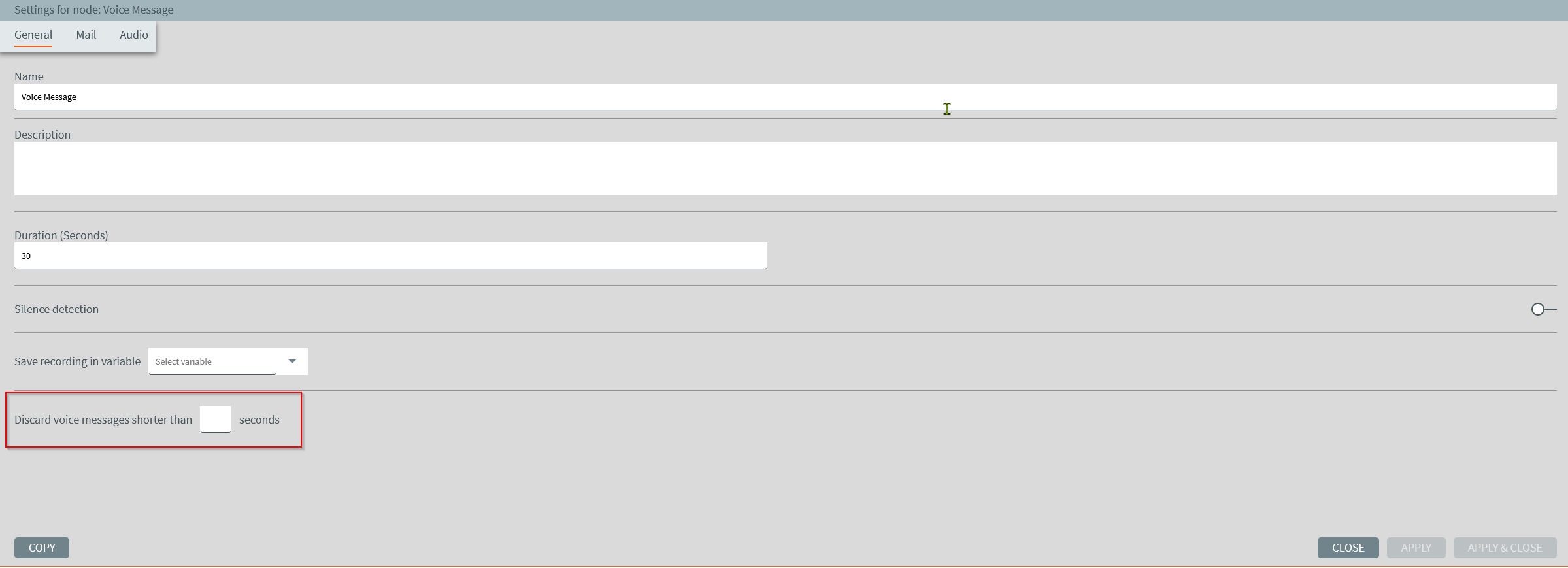
New condition in Switch component
In the branching component of the Call Flow Designer there is a new condition “Free agents for category”, which can be used to route incoming calls.
In contrast to the “available” agents (see below), an agent is considered “free” if he is not in the “busy” state, i.e. if he can accept a call directly.
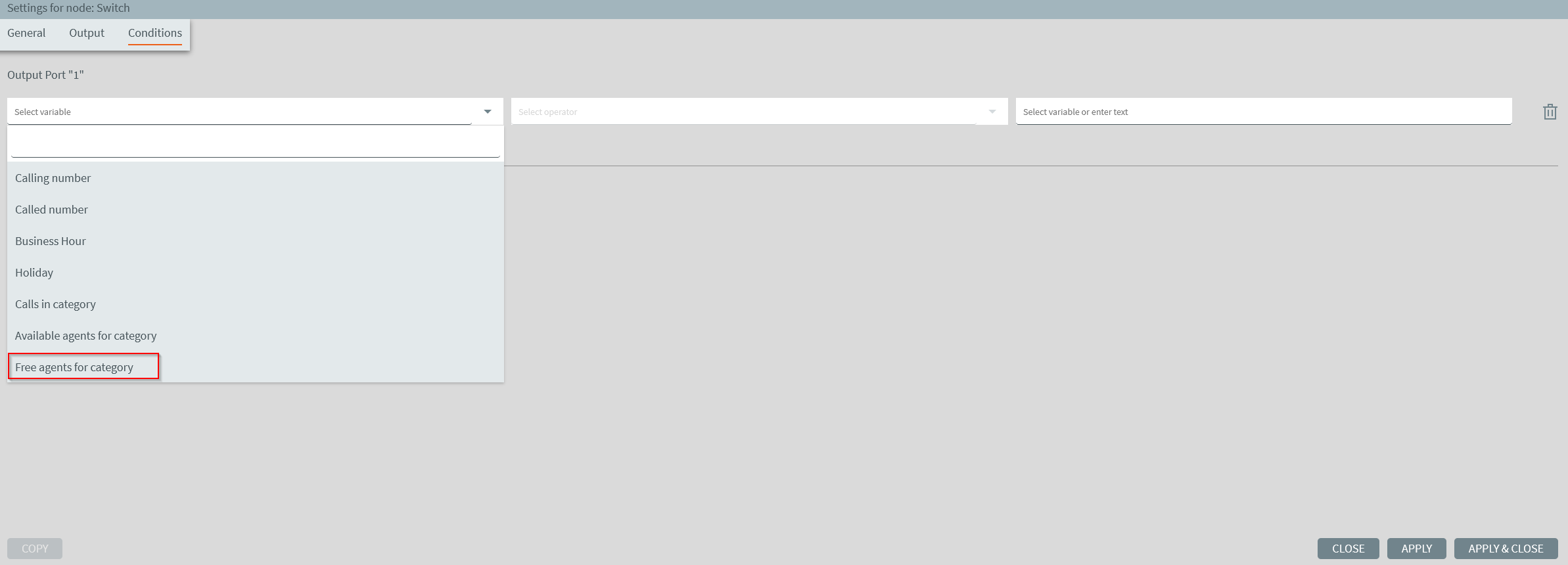
Version 8.0
Activate call flow directly from the Call Flow Editor app
Until now, a flow created with the Call Flow Editor app must first be downloaded and then uploaded to the desired phone system instance in order to activate the flow.
Now, there is an “Activate” button in the app that directly uploads and activates a selected call flow. The previous, manual process of downloading and then uploading is thus no longer necessary.

Two new conditions in Switch component
In the Switch component, there are two new conditions that can be used to route incoming calls:
- “Calls in category”: taking into account the number of calls in the queue for the respective category.
- “Available agents for category”: Consideration of the number of agents that are available for the respective category. An agent is considered “available” if he is logged on to the novomind iAGENT Desk with a Device ID, is ready for the “Call” channel and is not in “Pause” mode.
The values are always loaded up-to-date when the Switch component is passed through.

Support of voice inputs in the IVR
In the “Menue” and “Input” components, speech input is recognized as an alternative or in addition to DTMF input. Speech recognition is currently limited to individual keywords, such as “Service” or “Delivery date” or sequences of digits, for example for entering a customer number. “Expert settings” must be activated to enable speech input.
New variable data type “Phone Number”
Until now, phone numbers had to be stored in a variable of the data type “Text”. This was sometimes confusing, since other text variables such as public holidays were also suggested during a selection in addition to telephone numbers. With the new data type, it is now also possible in the Switch component, among other things, to route calls depending on a possible phone number suppression (see screenshot).

Audio files can be defined by a variable
Audio files can now be defined using a variable. For this purpose, in addition to the two existing options “Upload File” and “Start Recording”, another option has been added in the “Audio Card”, which is called “Audio Variable” and which controls the selection of the respective audio file to be played.
The variable can be assigned an external audio component as a value (via a URL such as: https://www2.cs.uic.edu/~i101/SoundFiles/StarWars3.wav).
Please note that for technical reasons, this function can only be activated in “Cross-language” mode for the time being.

Version 6.1
Two additional outputs at the “Queue” component
For even more flexibility when creating call flows, two additional outputs can now be activated at the queue component via the two switches described below in the configuration settings:
- “Deactivate queue if no agent logged in”: if no agent is logged in for the queue on the novomind iAGENT system at the time the call is received, the call is routed via the “No agent logged in” output added to the component on the right.
- “Agent terminates connection first”: When this switch is activated, a corresponding output is added to the bottom of the queue component. This output is triggered in the call flow if the agent terminates the connection before the caller after a call.
Version 6.0
Using variables in the configuration of Call Flow Designer components
In order to be able to design call flows as dynamically as possible, it is now also possible to use a variable instead of a fixed value for the configuration of components in various places. In addition to the configuration in the queue component, this option is also available in the following components of the Call Flow Designer for selected parameters:
- Menu
- Enter
- Redirection
- Voice message
- Recall
It should be noted here that in standard mode only variables of the associated data type (e.g. data type “Number” for the maximum number of waiting places in the queue configuration) can be selected. If, on the other hand, the expert mode has been activated, the selection of variables is possible regardless of the data type.
Business hours and holiday routing
In the switch component, an iAGENT business time previously set via the action component or its holidays can now be used as a condition. In the case of holidays, it is possible to query specific holidays such as Easter Monday or Christmas Day. Alternatively, you can also check whether a holiday is generally active that is configured on the novomind iAGENT system’s business hours.
Processing call flows on other novomind iAGENT systems
When exporting a call flow created with the Call Flow Designer, the data created by the Call Flow Designer is now also written to the ZIP file. This means that when a flow created with the Call Flow Designer is imported into another novomind iAGENT system, the Designer data is also loaded.
This makes it possible to edit the flow with the Call Flow Designer on a “foreign” novomind iAGENT system.
